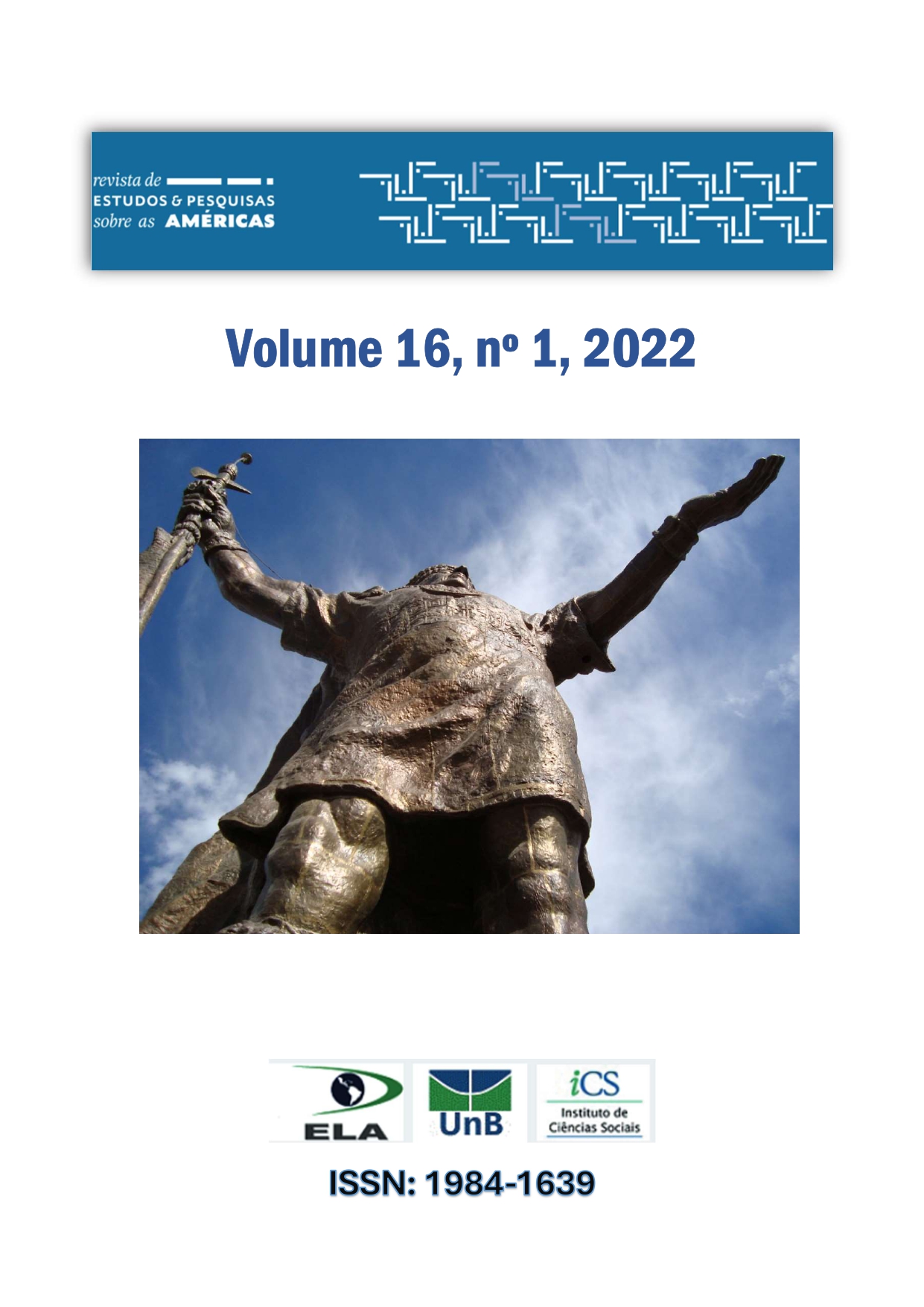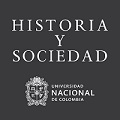The Futures of Darcy Ribeiro
DOI:
https://doi.org/10.21057/10.21057/repamv16n1.2022.39554Keywords:
Darcy Ribeiro, Futures, Brazil, Latin AmericaAbstract
The article addresses the various futures in the work of Darcy Ribeiro. It proposes a classification covering three moments in the development of these futures, in chronological order: the “necessary revolution”, the “time crisis” and the “possible utopia”. Based on his reflections, which are relevant in themselves, the article suggests that it is possible to circumscribe key aspects of the Latin American experience of “time crisis” and change between “regimes of historicity”. Finally, it defends the actuality of Darcy Ribeiro’s work, and of some of his futures. Furthermore, it highlights the very existence of futurizing restlessness and the act of futurizing as essential elements in societies like ours, which suffer from difficulties in projecting themselves into the future.
References
BAJTÍN, Mijaíl. Problemas de la poética de Dostoievski. México, FCE, 2003 [1ª ed. 1979].
BELL, Daniel. “Introducción” a KAHN, Herman, WIENER, Anthony. El año 2000. Buenos Aires, Emecé, 1969 [1ª ed. 1967].
COLOMBRES, Adolfo. América como civilización emergente. Buenos Aires, Catálogos, 2008.
DEVÉS, Eduardo, KOZEL, Andrés. Estudios eidéticos. Una conversación desde el Sur sobre la vida de las ideas y la reconfiguración de un espacio disciplinar. Santiago de Chile, Ariadna, 2018.
DEVINE GUZMÁN, Tracy. “‘Aqui e agora’: a Pátria Grande de Darcy Ribeiro, indigenista”. Revista Trajetos, v. 7, n. 13, 2009.
EGIDO, Luciano. Agonizar en Salamanca. Unamuno, julio-diciembre de 1936. Barcelona, Tusquets, 2006.
GAOS, José. “La profecía en Ortega”. In: Sobre Ortega y Gasset y otros trabajos de historia de las ideas en España y la América española. Obras Completas. México, UNAM, 1992, v. IX [1ª ed. 1946-47].
GOMES, Candido Alberto. Darcy Ribeiro. Recife, Fundação Joaquim Nabuco, Editora Massangana, 2010.
HARTOG, François. Regímenes de historicidad. México, Universidad Iberoamericana, 2007 [1ª ed. 2003].
HERRERA, Amílcar (dir.). ¿Catástrofe o Nueva Sociedad? Modelo Mundial Latinoamericano treinta años después. Buenos Aires, IDRC-CRID/IIED, 2004 [1ª ed. 1977].
HEYMANN, Luciana Quillet. “The utopian Darcy Ribeiro archive”. História, Ciências, Saúde – Manguinhos, v. 19, n. 1, 2012.
ÍMAZ, José Luis de. Nosotros, mañana. Buenos Aires, Eudeba, 1968.
KOZEL, Andrés. “La Utopía salvaje de Darcy Ribeiro”. Nueva Sociedad, n. 283, 2019.
_____________ “Darcy Ribeiro y el concepto de civilización”. Cuadernos Americanos, n. 164, 2018.
_____________, PATROUILLEAU, M. Mercedes. “La exploración científica del futuro, antes de la última dictadura”. In: BIAGINI, Hugo, OVIEDO, Gerardo (dir.). El pensamiento alternativo en la Argentina contemporánea. Buenos Aires, Biblos, 2016, Tomo III.
MEADOWS, Donella. Los límites del crecimiento: informe al Club de Roma sobre el predicamento de la humanidad. México, Fondo de Cultura Económica, 1972.
MIGLIEVICH-RIBEIRO, Adelia, ROMERA JUNIOR, Edison. “Vozes dissidentes e modernidades dissonantes na América Latina: legados e projetos de Bolívar e Martí em Darcy Ribeiro”. Civitas, v. 15, n. 3, 2015.
MIGNOLO, Walter. “Globalização, processos de civilização, línguas e culturas”. Cadernos CRH, n. 22, 1995.
OLIVA DOS SANTOS, Luzia Aparecida. O percurso da indianidade na literatura brasileira. São Paulo, UNESP, 2009.
PEREIRA GOMES, Mércio. “Darcy Ribeiro, antropologador”. In: RIBEIRO, Darcy. Las Américas y la civilización. Proceso de formación y causas del desarrollo desigual de los pueblos americanos. Caracas, Ayacucho, 1992, pp. 531-541.
RIBEIRO, Darcy. El proceso civilizatorio: de la revolución agrícola a la termonuclear. Buenos Aires, CEAL, 1971 [1ª ed. 1968].
______________ Las Américas y la civilización. Proceso de formación y causas del desarrollo desigual de los pueblos americanos. Caracas, Ayacucho, 1992 [1ª ed. 1969].
_____________ El dilema de América Latina. Estructuras de poder y fuerzas insurgentes. México, Siglo Veintiuno, 1971.
_____________ “La civilización emergente”. Nueva Sociedad, n. 73, 1984, pp. 23-37.
_____________ “Venutopías 2003”. In: Indianidades y venutopías. Buenos Aires, Ediciones del Sol / CEHASS, 1988a [1ª ed. 1973].
_____________ “El abominable hombre nuevo”. In: Indianidades y venutopías. Buenos Aires, Ediciones del Sol / CEHASS, 1988b.
_____________ Utopia selvagem. Saudades da inocência perdida. Uma fábula. São Paulo, Global, 2014 [1ª ed. 1982].
_____________ América Latina: a Pátria Grande. São Paulo, Global, 2017 [1ª ed. 1986].
_____________ O povo brasileiro. A formação e o sentido do Brasil. São Paulo, Global, 2015 [1ª ed. 1995].
RIBEIRO COELHO, Haydée, ROCCA, Pablo (organização, estudos e notas). Diálogos latinoamericanos. Correspondência entre Ángel Rama, Berta e Darcy Ribeiro. São Paulo, Global Editora, 2015.
________________________ “O exílio de Darcy Ribeiro no Uruguai”. Aletria, v. 9, 2002, pp. 211-225.
VARSAVSKY, Óscar. Proyectos nacionales. Planteo y estudios de viabilidad. Buenos Aires, Periferia, 1971.
VIDAL COSTA, Adriane. “Notas de pesquisa. Darcy Ribeiro no Uruguai, Venezuela, Chile e Peru – exílio, redes intelectuais e circulação de ideias (1964-1976)”. Seminario Interinstitucional de “Historia Intelectual de América Latina”, El Colegio de México/UAM-Cuajimalpa/Universidad de Colima, 31 de maio de 2021.
Downloads
Published
Issue
Section
License
Copyright (c) 2023 Andres Kozel, Fabricio Pereira da Silva

This work is licensed under a Creative Commons Attribution-NonCommercial 4.0 International License.
The published material is the property of the Journal, and may be reproduced in whole or in part with indication of the source.
Copyright: Authors will be responsible for obtaining the copyright of the material used. Authors who publish in this journal agree to the following terms:
a)Authors retain the copyright and grant the journal the right of first publication, with the work simultaneously licensed under
the Creative Commons Attribution License which allows the sharing of work with acknowledgment of authorship and initial publication in this journal.
b) Authors are authorized to take additional contracts separately, for non-exclusive distribution of the version of the work published in this journal (eg, publish in institutional repository or as a book chapter), with acknowledgment of authorship and initial publication in this journal.
c) Authors are allowed and encouraged to publish and distribute their work online (eg in institutional repositories or on their personal page) at any point before or during the editorial process, as this can generate productive changes as well as increase the impact and the citation of the published work (See The Effect of Free Access).
















